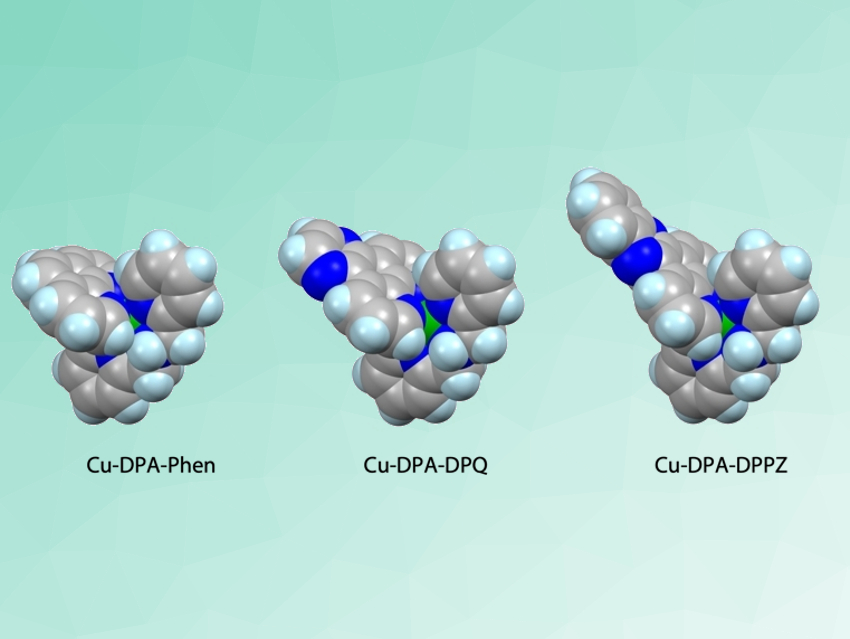Metal-based drugs that react with DNA can be used to treat cancer. The most successful anticancer metallodrugs contain platinum. However, not all cancers respond well to existing platinum therapies, and thus, new metallodrugs could be useful. Some copper compounds, for example, can damage cancer cells by generating reactive oxygen species (ROS). However, there are challenges in developing copper compounds suitable for this task. Ideally, these compounds need high stability and high‐affinity DNA binding.
Andrew Kellett, Dublin City University, Ireland, and colleagues have developed a new type of copper metallodrug active against human pancreatic cancer cells. The compounds combine the tris‐chelating polypyridyl ligand di‐(2‐pycolyl)amine (DPA) with a DNA-intercalating phenanthrene unit. Their general formula is Cu‐DPA‐N,N‘ (structures pictured), where N,N‘ = 1,10‐phenanthroline (Phen), dipyridoquinoxaline (DPQ) or dipyridophenazine (DPPZ). The team first prepared Cu‐DPA perchlorate by reacting DPA with a methanolic solution of Cu(ClO4)2. Cu‐DPA was then treated with either Phen, DPQ, or DPPZ in methanol to give the respective Cu‐DPA‐N,N’ perchlorate complex.
The compounds show high stabilities and efficiently damage DNA by ROS production. Cu‐DPA‐DPPZ is the complex with the greatest DNA binding and intercalation effects and shows promising anticancer activity against human pancreatic tumor cells in vitro. This shows the promise of these complexes for further development and possible applications as chemotherapeutic drugs.
- Polypyridyl‐Based Copper Phenanthrene Complexes: Combining Stability with Enhanced DNA Recognition,
Nicoló Zuin Fantoni, Zara Molphy, Sinéad O’Carroll, Georgia Menounou, George Mitrikas, Marios G. Krokidis, Chryssostomos Chatgilialoglu, John Colleran, Anna Banasiak, Martin Clynes, Sandra Roche, Suainibhe Kelly, Vickie McKee, Andrew Kellett,
Chem. Eur. J. 2020.
https://doi.org/10.1002/chem.202001996




